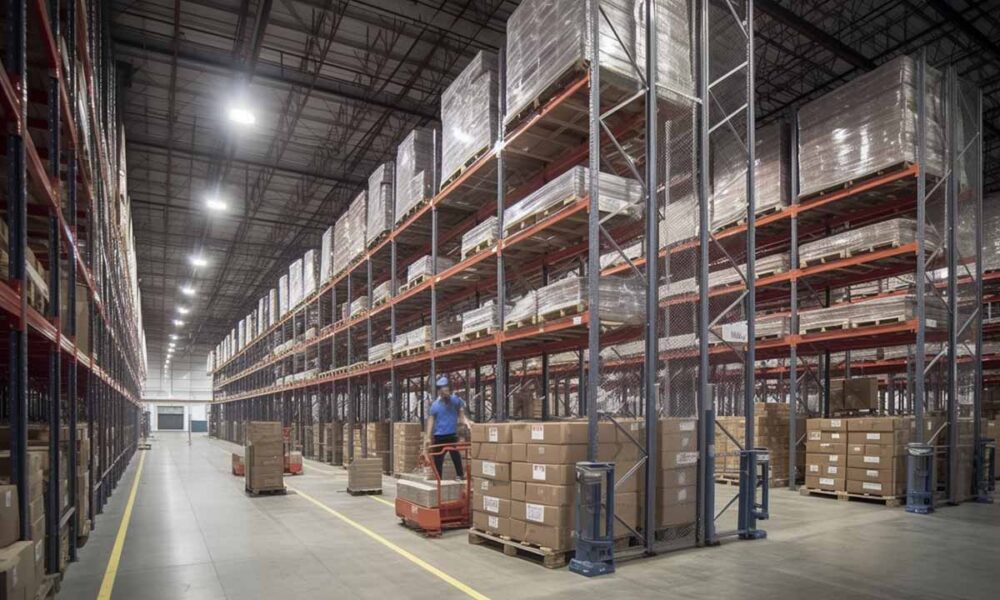When it comes to logistics and distribution, the choice of infrastructure plays a pivotal role in ensuring efficiency, cost-effectiveness, and sustainability. Among the various options available, metal warehouse structures have emerged as the preferred choice for distribution centres due to their unparalleled technical advantages and suitability for large-scale operations. This article discusses the technical intricacies that make them the ideal solution for modern logistics hubs.
Advanced Structural Engineering and Load-Bearing Capacity
All metal warehouse buildings are engineered to withstand heavy loads and adverse weather conditions. Their structural integrity is achieved through advanced engineering techniques, such as rigid frame systems and truss designs, which distribute weight evenly and minimize the risk of structural failure. High-strength steel alloys enhance load-bearing capacity, allowing for efficient storage of goods without compromising safety.
Optimized Cost-Benefit Analysis for Large-Scale Operations
One of the primary considerations for distribution centres is cost-effectiveness without compromising on quality. Metal buildings for warehouses offer a compelling advantage in this regard, providing a favourable cost-benefit ratio compared to traditional construction methods.
The streamlined manufacturing process of metal components reduces material waste and labour costs, resulting in significant savings for large-scale operations. Moreover, the longevity of metal structures minimizes maintenance expenses over the facility’s lifecycle, further enhancing cost efficiency.
Modular Design and Scalability for Future Expansion
Their modular design facilitates seamless scalability to accommodate evolving business needs. These buildings can be easily expanded or reconfigured to adapt to changes in storage requirements or operational processes.
Its versatility allows for swift modification implementation, minimizing downtime and ensuring uninterrupted workflow. Whether increasing storage capacity or integrating new technologies, metal construction provides the flexibility needed to stay ahead in the dynamic logistics industry.
Thermal Insulation and Energy Management Systems
Efficient thermal insulation is essential for maintaining optimal storage conditions and reducing energy consumption in distribution centres. Metal buildings for warehouses incorporate advanced insulation materials and energy management systems to regulate internal temperatures effectively.
These buildings, from reflective roof coatings to insulated wall panels, are designed to minimize heat transfer and enhance energy efficiency. By reducing heating and cooling demands, they contribute to sustainable operations while lowering utility costs for facility owners.
Accelerated Construction Timelines and Techniques
Time is of the essence in the logistics industry, where delays can have significant repercussions on supply chain operations. Metal buildings offer expedited construction timelines and innovative techniques that expedite project completion.
Prefabricated metal components are manufactured off-site, allowing for simultaneous site preparation and assembly. This approach significantly reduces construction time compared to traditional building methods, enabling distribution centres to become operational sooner and capitalize on market opportunities.
Integrated Security Systems and Structural Safety
Given the valuable assets they house, security is a top priority for distribution centres. Metal structures have integrated security systems and robust structural features to safeguard against theft, vandalism, and natural disasters.
From advanced surveillance cameras to access control systems, these buildings provide comprehensive security solutions tailored to the specific needs of logistics operations. These structures’ inherent strength and durability enhance resilience against external threats, ensuring the protection of assets and personnel.
From advanced structural engineering to integrated security systems, metal warehouse buildings are engineered to meet the complex needs of modern logistics hubs. By leveraging the technical prowess of metal construction, distribution centres can optimize their operations, enhance cost-effectiveness, and maintain a competitive edge in the dynamic logistics landscape.
